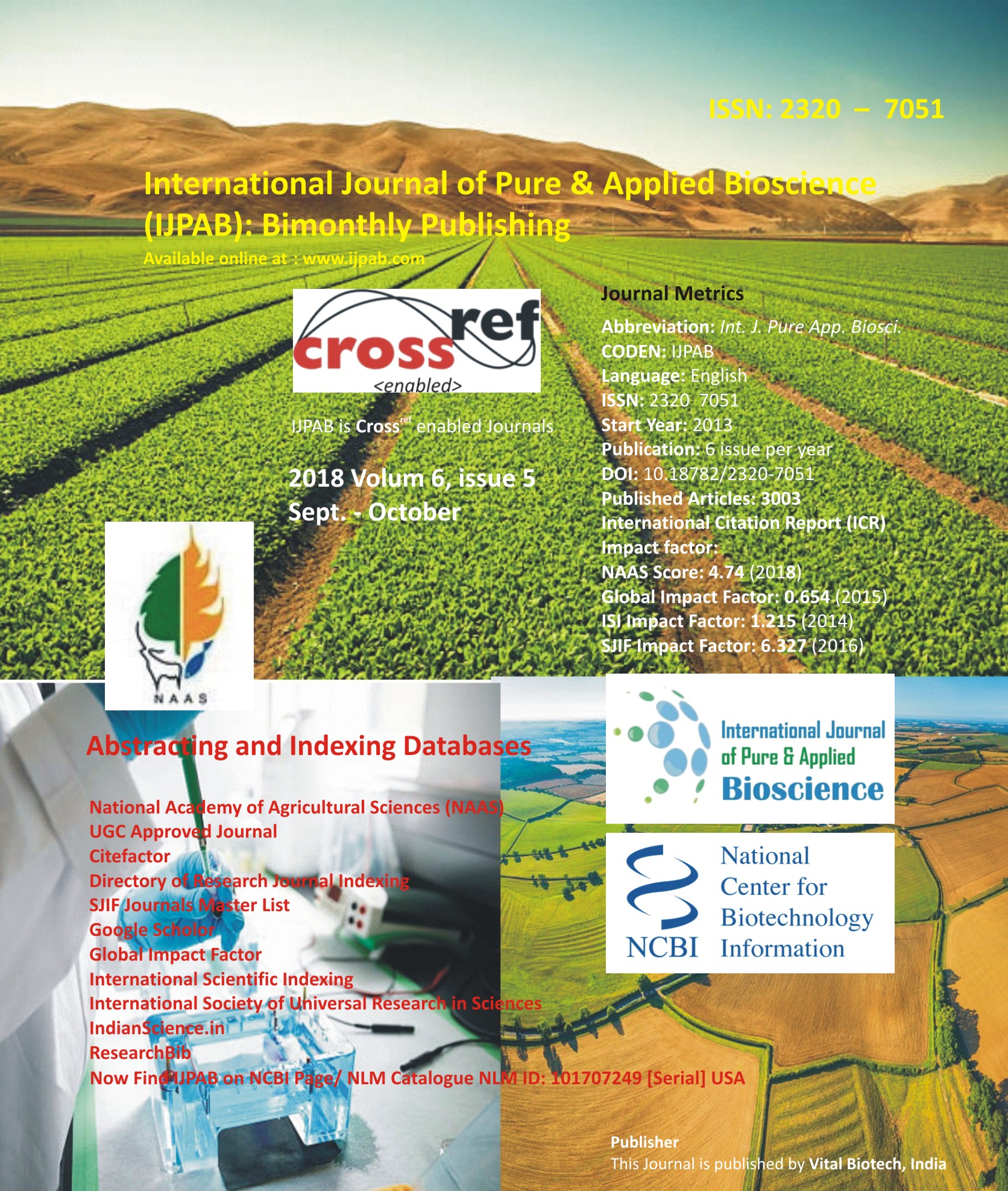
-
No. 772, Basant Vihar, Kota
Rajasthan-324009 India
-
Call Us On
+91 9784677044
-
Mail Us @
editor@ijpab.com
International Journal of Pure & Applied Bioscience (IJPAB)
Year : 2018, Volume : 6, Issue : 5
First page : (725) Last page : (731)
Article doi: : http://dx.doi.org/10.18782/2320-7008
Integrated Management of Alternaria Leaf Spot of Cabbage Caused by Alternaria brassicicola
Gunda V. N. S. Madhu Kiran1*, Thara, S. S.2 and Nisha, A.3
*1Department of Plant Pathology,2Assistant Professor, 3Department of Plant Pathology,
College of Agriculture, Vellayani, Kerala Agricultural Uiversity, Kerala, India
*Corresponding Author E-mail: madhuabhi154@gmail.com
Received: 3.07.2018 | Revised: 10.08.2018 | Accepted: 16.08.2018
ABSTRACT
Alternaria leaf spot of cabbage caused by Alternaria brassicicola is one of the most destructive disease of cabbage (Brassica oleracea var. capitata) causing both quantitative as well as qualitative losses all over the kerala. The disease is difficult to manage alone with fungicides or bioagents. Hence the present study was undertaken to manage the disease effectively by utilization of fungicides, bioagents and their combinations. The results from in vivo assay showed that lowest per cent disease index was recorded with the treatment hexaconazole + B. subtilis (10.8%) and the disease suppression over control was 79.4%. This was followed by hexaconazole (16.6%) which was on par with tebuconazole (18.3%) and propiconazole (19.1%). Maximum yield was recorded with the treatment hexaconazole + B. subtilis (0.58 kg/plant) followed by hexaconazole (0.54 kg/plant), tebuconazole (0.52 kg/plant) and propiconazole (0.48 kg/plant).
Key words: Alternaria, Tebuconazole, Propiconazole, Hexaconazole,
Full Text : PDF; Journal doi : http://dx.doi.org/10.18782
Cite this article: Madhu Kiran, G.V.N.S., M., Thara, S. S., Nisha, A., Integrated Management of Alternaria Leaf Spot of Cabbage Caused by Alternaria brassicicola, Int. J. Pure App. Biosci.6(5): 725-731 (2018). doi: http://dx.doi.org/10.18782/2320-7051.7008

